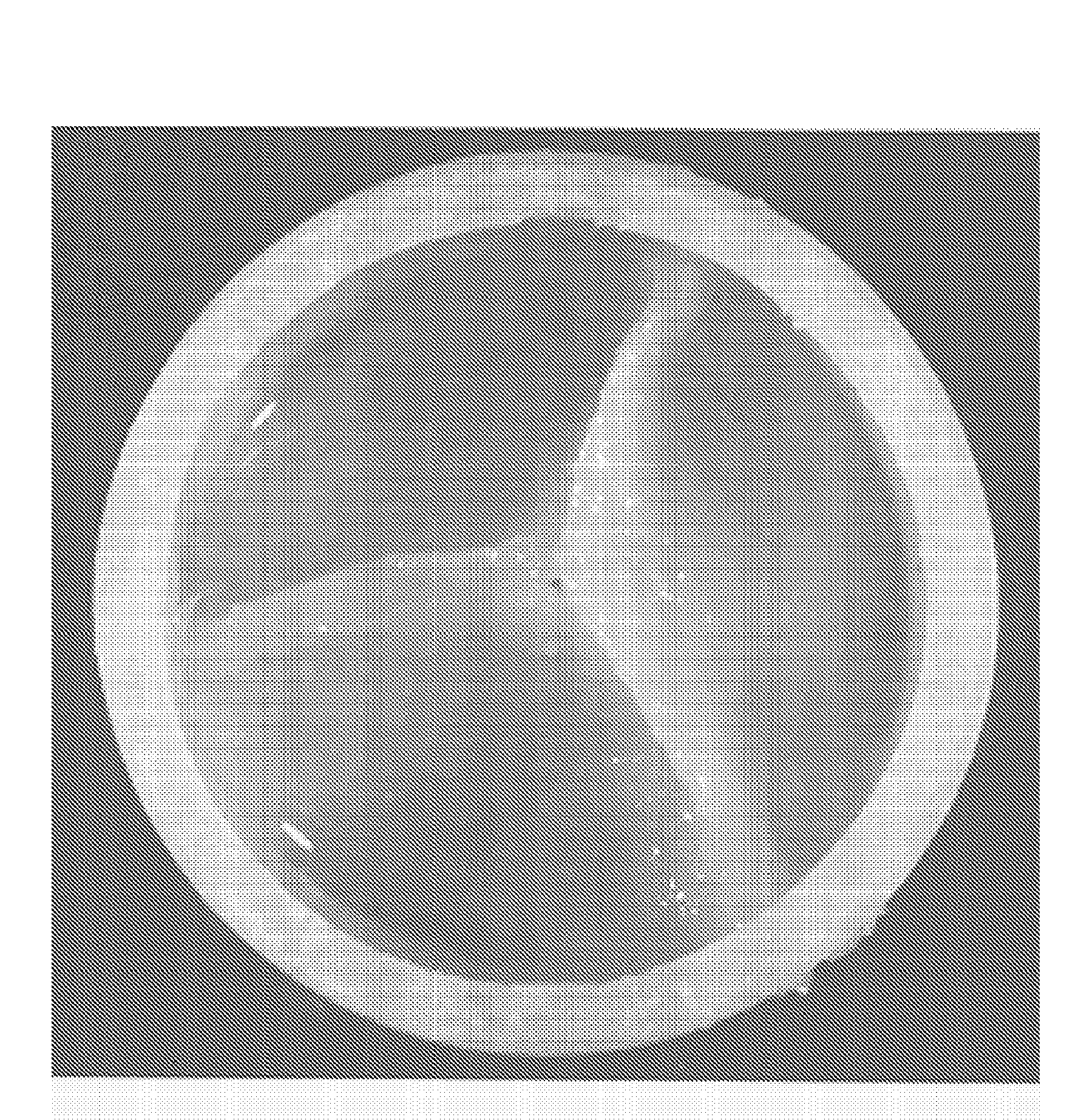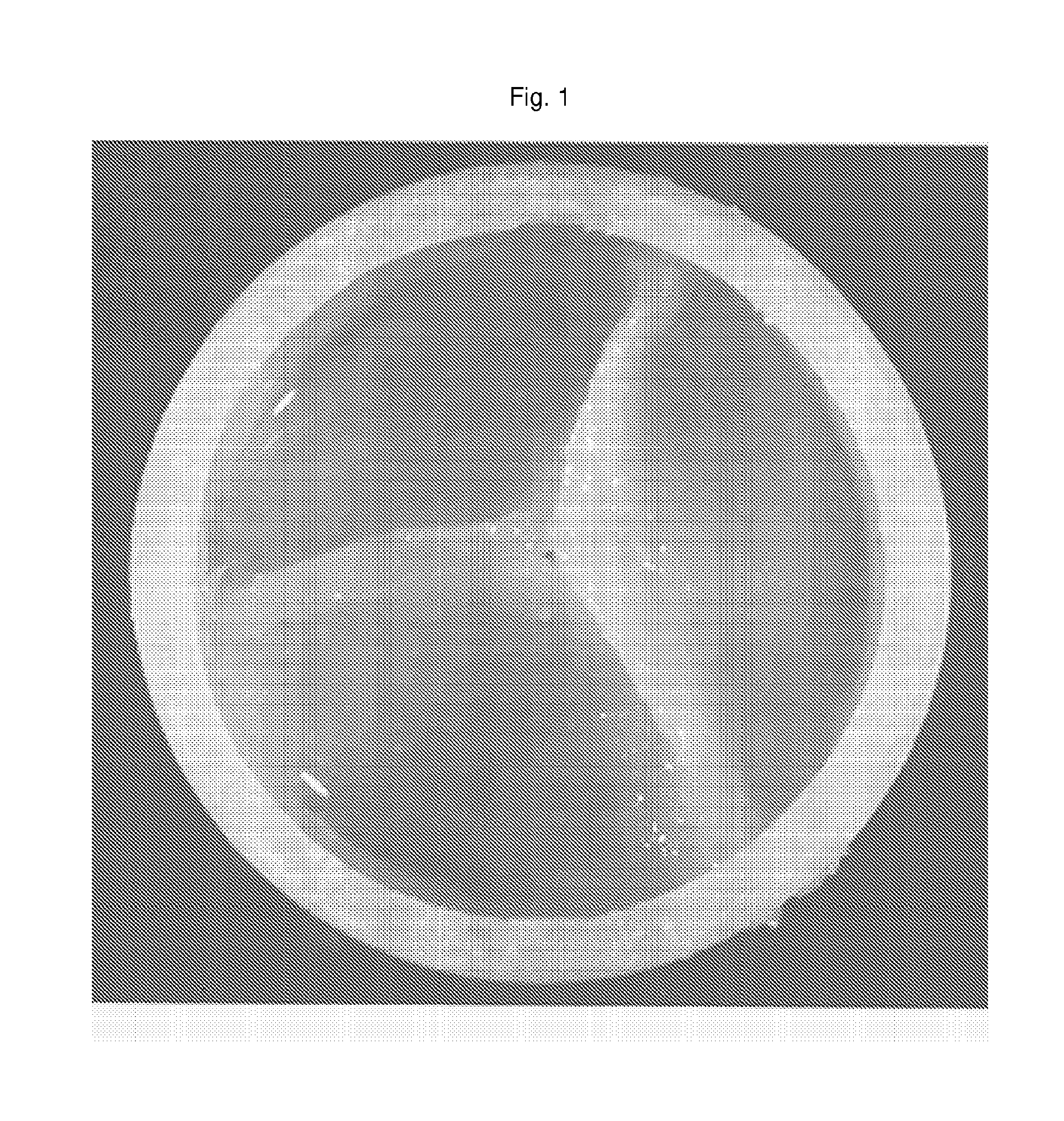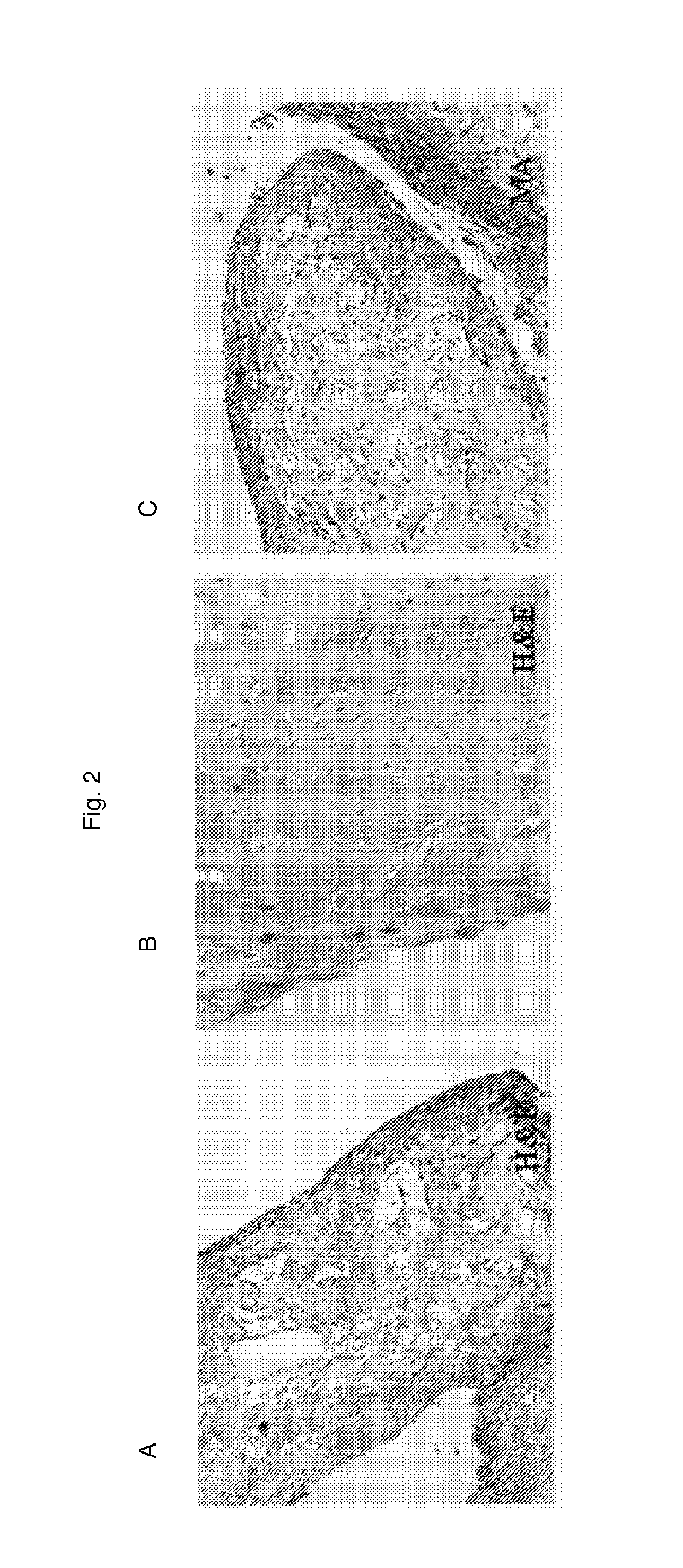Tissue Engineering Using Pure Populations Of Isolated Non-Embryoblastic Fetal Cells
a technology of pure populations of non-embryoblastic fetal cells and tissue engineering, which is applied in the field of in vitro production of mammalian tissue replacements, can solve the problems of obstructive tissue ingrowth, living structure lacking the capacity for self-repair, and significant morbidity and mortality, and achieves the effect of improving the tissue quality of engineered replacements and increasing the quality of cells
- Summary
- Abstract
- Description
- Claims
- Application Information
AI Technical Summary
Benefits of technology
Problems solved by technology
Method used
Image
Examples
example 1
Production of a Trileaf Let Heart Valve From Fetal Cells Isolated From Chorionic Villi
[0080]Isolation of Non-Embryoblastic Fetal Cells
[0081]Non-embryoblastic fetal cells (10 to 30 mg) were obtained from routinely prepared chorionic villus samples in the 11 week of pregnancy. Most of the tissues were directly used for prenatal diagnostics. Using 5 mg of chorionic villi sample were isolated by digestion of the obtained tissue. Briefly, the chorionic villi were washed with serum free medium and transferred to a centrifugation tube. Tissue was completly covered with collagenase and incubated at 37 [deg.]C. During incubation the tube was shaken every 15 min. After 60 min cells were centhfuged and the supernatant discarded carefully. Cells were suspended in trypsin and incubated for 10 min at 37[deg.]C. Afterwards, cells were centhfuged again. After discarding the supernatant the cells were resuspended. From this cell suspension different types of cells could be sorted by magnetic beads u...
example 2
Production of a Trileaf Let Heart Valve From Fetal Cells Isolated From Amniotic Fluid
[0091]A similar approach was performed using fetal cells isolated from 2.5 ml amniotic fluid obtained in the 15 week of pregnancy, whereas the remainder of the sample was used for prenatal diagnostics. Briefly, the fluid was centhfuged and cells isolated by using magnetic beads for endothelial progenitor cells. The positive coated cells as well as the negative cells were cultured under the culture conditions mentioned above in Example 1 and the steps for the fabrication of the cardiovascular replacement were followed.
[0092]Under these culture conditions both types of cells showed excellent proliferation capacity and expressed all typical markers for myofibroblast and / or fibroblast-like cells and endothelial cells and / or endothelial progenitor cells, respectively. This result is highly surprising, since the apoptotic potential of amniotic fluid-derived cells is not fully understood today. Again, surp...
PUM
 Login to View More
Login to View More Abstract
Description
Claims
Application Information
 Login to View More
Login to View More - R&D
- Intellectual Property
- Life Sciences
- Materials
- Tech Scout
- Unparalleled Data Quality
- Higher Quality Content
- 60% Fewer Hallucinations
Browse by: Latest US Patents, China's latest patents, Technical Efficacy Thesaurus, Application Domain, Technology Topic, Popular Technical Reports.
© 2025 PatSnap. All rights reserved.Legal|Privacy policy|Modern Slavery Act Transparency Statement|Sitemap|About US| Contact US: help@patsnap.com



